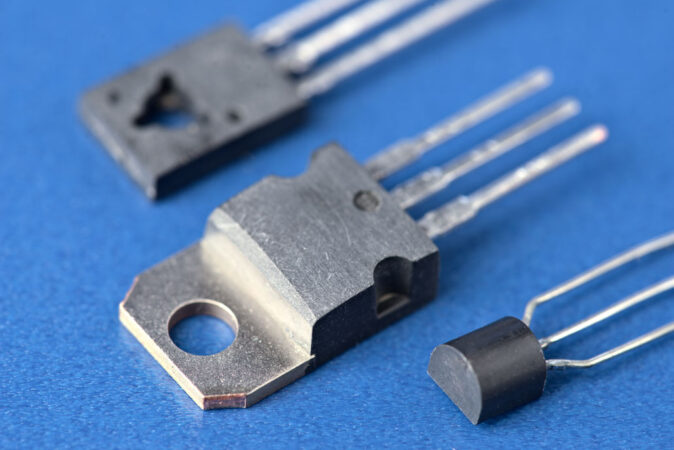Balsa wood transistors could usher in ‘greener’ electronics
These devices can control the movement of electricity in electronic circuitry

Sturdy and lightweight, balsa wood has become a favorite of hobbyists, especially those building model planes. But with a chemical treatment, this wood can become a building block of electrical circuits.
capecodphoto/E+/Getty Images Plus
This is another in our series of stories identifying new technologies and actions that can slow climate change, reduce its impacts or help communities cope with a rapidly changing world.
A team in Europe is working with wood, but not in the usual ways. They’re not carpenters. Or furniture-builders. Instead, they’re scientists exploring how wood can lead to greener electronic devices — ones whose production spews less climate-warming gas into the air. Their latest invention is a transistor made from balsa wood.
Transistors play a critical role in computers and other devices. They act like tiny switches to control the flow of electricity. Engineers use them to process and store data. Today’s laptops may host billions of them. For all of these to fit, they must be tiny — only a little wider than a strand of DNA.
The new transistor being built by Isak Engquist and his team at Sweden’s Linköping University isn’t as small as those. Big enough to see and hold, it can withstand only a low voltage. (Voltage is like an electric pressure that pushes electrons along.) And its relatively big size means it’s not well-suited for conventional computers. It also works electrochemically. That means it controls a current using charged particles called ions.
This new tech shows a “proof of concept” — that the idea can work, even if the new device is not yet ready to put into today’s electronics. And while large by today’s standards, such a transistor still might prove useful for electronics that require little voltage, says Engquist.
Daniel Simon agrees. Even as a proof of concept, he says, “this is a big deal.” Like Engquist, Simon is a physicist at Linköping. Unlike Engquist, however, he didn’t work on the new device.
The new transistor suggests that future electronic devices might be made in living plants, Simon says. “Imagine peeling away some bark from a living tree,” he says, “and stamping electronic circuits into the living wood.”
In fact, Engquist says, “there are so many ways that we can use wood and the components of wood that we would never have thought of.” For instance, he can now imagine a wood-based sensor that could monitor crop health, measure pollution or survey a forest for fire risk.

Why wood?
“Green electronics is a very hot topic,” notes Guido Panzarasa. He works at ETH Zürich, in Switzerland. The term “green electronics,” he explains, usually refers to devices “that rely less on nonrenewable sources” — such as things that must be mined. That’s what got this materials scientist interested in wood-based devices.
Transistors in computers are usually made of silicon. Producing silicon for such uses can release substantial amounts of pollutants. The first, carbon dioxide, is a climate-warming gas. Nitrogen oxides also get released. These gases can harm the lungs and aggravate asthma. Turning this silicon into devices for electronics then relies on fluorinated gases — which are thousands of times more potent at warming the climate than CO2.
A wood transistor would do away with silicon altogether.
Such a device may seem surprising, admits Van Chinh “Robert” Tran. A graduate student, he led the design of the new transistor. When dry, he notes, wood is an insulator. It doesn’t allow electricity to flow through. The Linköping team he’s part of wondered how wood might be altered so that it would conduct electricity.
There are at least two ways to do this, Panzarasa says. You could treat the surface of wood with materials to start a chemical reaction that turns the wood into a better electrical conductor. He’s working on devices that use this process.
A second approach uses the structure of the wood to support conducting materials. That’s the idea behind the new Linköping transistor.
Figuring this out “was [our] first step,” Tran says. Wood is thick, but porous. Many channels snake through it. Water flows through these channels as a tree grows. But when they dry, those channels empty out. His group suspected those channels could be useful — especially if they were a bit larger. That would mean changing wood on the inside of those channels.
Lignin is the material in cell walls that helps plants stand tall. Using heat and chemicals, the Linköping group removed lignin. That opened more space in those channels. Then, the team filled those hollowed-out channels with an electrically conducting material. They refer to it as PEDOT:PSS. (It’s an abbreviation for poly(3,4-ethylenedioxythiophene)–polystyrene sulfonate.)
PEDOT:PSS is a synthetic chemical sometimes used in other devices, including solar cells. On a microscopic level, this polymer looks like a long string of identical molecules. It can be applied as a liquid. For its research, the Linköping team poured the liquid into the inner tunnels of the wood to coat their surfaces.

How it performed
To build a transistor, the team used three small pieces of the treated wood. Each was one millimeter (0.04 inch) thick and 30 millimeters (1.2 inches) long. Two pieces were five millimeters wide, and the third was two millimeters wide. The narrower piece was sandwiched crosswise between the other two and at a right angle. Together, they created the shape of a lower-case letter t.
Tests showed this device indeed worked like an electrical switch. The top and bottom pieces acted like gates.
In the middle piece, the channels were filled with a gel called an electrolyte. Charged ions flowing through this electrolyte created a current. But when a voltage was applied between the top and bottom gates, other charged particles moved through the electrolyte. This changed the conductivity of the channel in the middle — and effectively turned the ion flow “off.”
By turning the gate’s voltage on and off, the researchers could control the flow of current through the middle piece.

Educators and Parents, Sign Up for The Cheat Sheet
Weekly updates to help you use Science News Explores in the learning environment
Thank you for signing up!
There was a problem signing you up.
Optimizing the process
Finding the best design for this device required trial and error, Tran says.
First step: finding the best wood. The scientists tested balsa, pine and ash. “Balsa performed the best,” he says. It conducted electricity three times as well as either of the other two types of wood.
“Balsa is an interesting wood. It is much less dense” than other woods, notes Panzarasa. Its “channels are relatively big,” he says, and its cell walls “relatively thin.”
Tran and his group also had to find the right recipe for removing lignin. Take out too little and the wood wouldn’t conduct electricity well. Take out too much and the wood softened and collapsed.
In the future, Engquist says, his team wants to make the device even better. “We want to improve the performance” — such as how much voltage it can handle. His group suspects the PEDOT:PSS didn’t coat the interior of the wood evenly, for example. With a more even coat, they think their new transistor could conduct electricity more efficiently. They are also studying ways to remove more lignin.
Panzarasa, in Zürich, says researchers could also keep testing the wood itself. He’d like to see the balsa transistor compared against those built out of other porous materials, to see if it still works better.
Engquist is also looking to find the right application.
That might be an environmental sensor, Tran says. Or it might be a tree-based battery. When these researchers dream big, after all, they think about other exotic ideas around green electricity.
For instance, Tran says, “we have even discussed growing the transistor inside the tree.” Now how’s that for the ultimate in green electronics?
This is one in a series presenting news on technology and innovation, made possible with generous support from the Lemelson Foundation.







